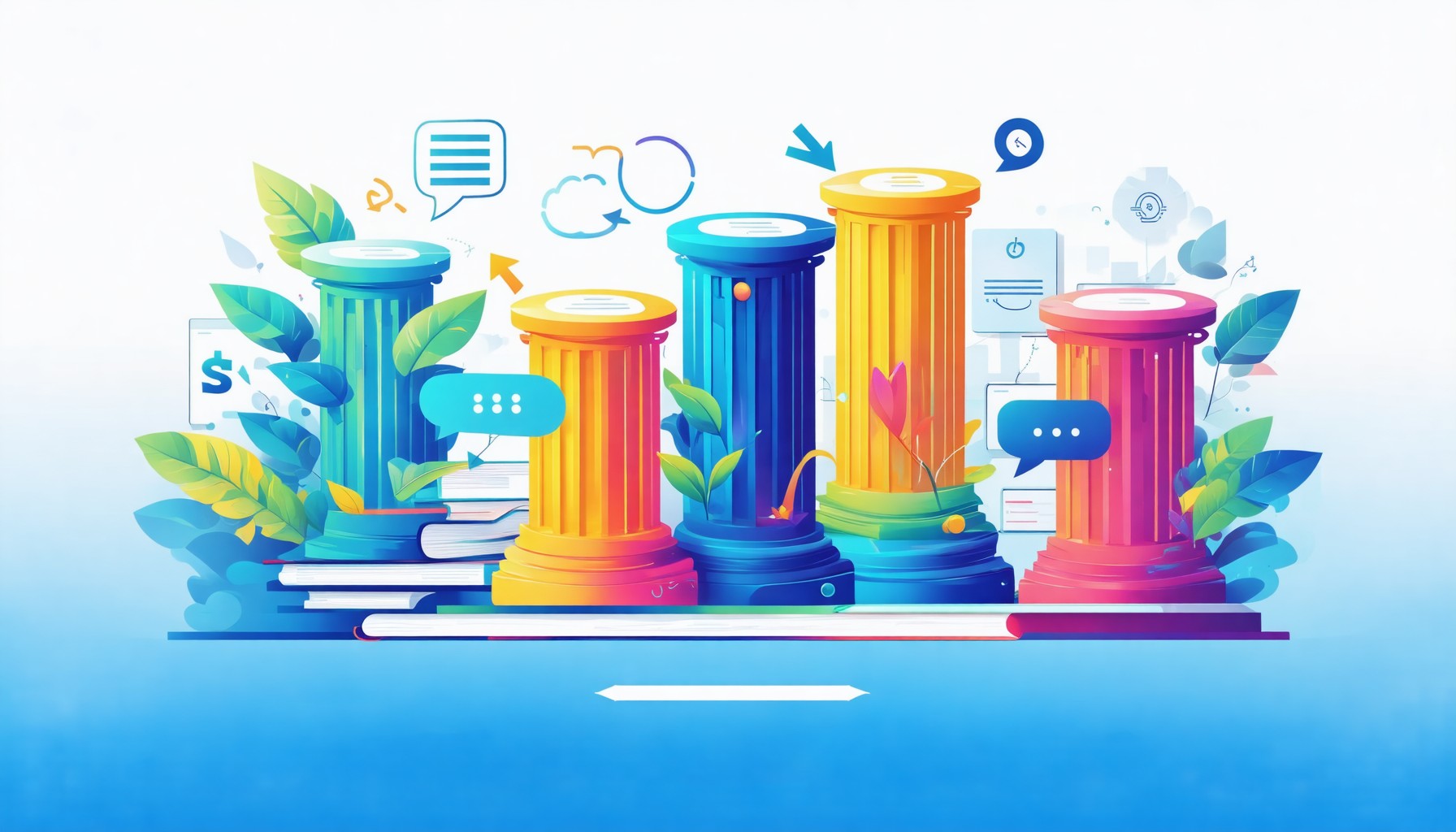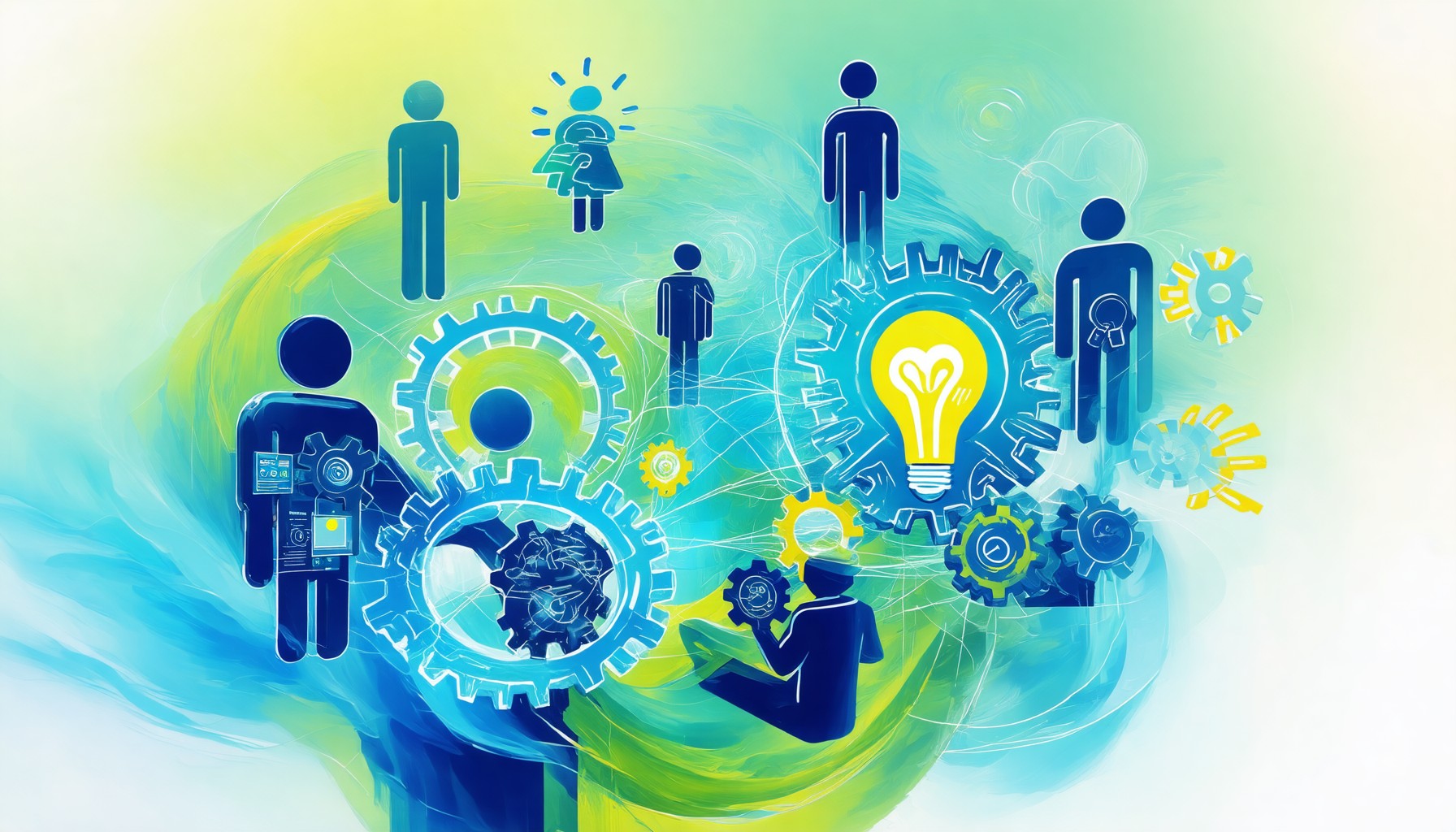Key Takeaways
- 24/7 Availability: Support chatbots provide round-the-clock assistance, ensuring customers can get help anytime, boosting satisfaction.
- Multi-Platform Integration: These AI-driven tools seamlessly engage customers across various channels, including websites and messaging apps.
- Personalized Interactions: Utilizing machine learning, chatbots deliver tailored responses, enhancing user experience and engagement.
- Cost Efficiency: Automating routine inquiries allows businesses to reduce operational costs and focus human resources on complex issues.
- Data Collection: Chatbots gather valuable insights on customer preferences and interactions, aiding in product and service improvement.
- Scalability: Capable of handling multiple inquiries simultaneously, chatbots support business growth without proportional staffing increases.
- Enhanced Customer Experience: Quick and consistent responses from chatbots lead to higher customer loyalty and retention rates.
In today’s fast-paced digital landscape, support chatbot examples have emerged as essential tools for enhancing customer service and improving user experience. These intelligent systems not only streamline communication but also provide businesses with the ability to respond to customer inquiries efficiently. In this article, we will delve into the world of support chatbots, exploring what they are and their pivotal role in customer service. We will highlight best chatbot examples across various industries, showcasing how they enhance learning experiences for students and improve customer interactions. Additionally, we will discuss the top AI chatbot solutions available, compare their features, and guide you through the steps to create your own customer support chatbot. By the end of this article, you will have a comprehensive understanding of the different types of chatbots, their functions, and how they can revolutionize your customer service strategy.
What are support chatbots?
Support chatbots are advanced AI-driven tools designed to enhance customer service by providing immediate assistance and information to users across various platforms. These chatbots facilitate omnichannel support, ensuring that businesses can maintain consistent and seamless interactions with customers, regardless of the communication channel.
Understanding the Role of Support Chatbots in Customer Service
Key features of support chatbots include:
- 24/7 Availability: Support chatbots operate around the clock, allowing customers to receive assistance at any time, which significantly improves customer satisfaction and engagement.
- Multi-Platform Integration: These chatbots can engage with customers through various channels such as live chat on websites, messaging apps like WhatsApp and Facebook Messenger, and social media platforms. This flexibility allows customers to seek help in their preferred environment.
- Personalized Interactions: Utilizing machine learning and natural language processing, support chatbots can analyze user data to provide tailored responses, enhancing the overall customer experience.
- Cost Efficiency: By automating routine inquiries and support tasks, businesses can reduce operational costs while reallocating human resources to more complex customer issues.
- Data Collection and Insights: Support chatbots gather valuable data on customer interactions, preferences, and feedback, which can be analyzed to improve products and services.
According to a report by Gartner, by 2025, 75% of customer service interactions will be powered by AI, highlighting the growing importance of chatbots in customer support strategies. Additionally, a study by Zendesk indicates that 69% of consumers prefer chatbots for quick communication with brands.
Incorporating support chatbots into customer service strategies not only enhances efficiency but also aligns with the evolving expectations of consumers for instant and effective support.
Benefits of Using Support Chatbots for Businesses
Implementing support chatbots offers numerous advantages for businesses, including:
- Enhanced Customer Experience: By providing immediate responses and assistance, support chatbots improve overall customer satisfaction, leading to increased loyalty and retention.
- Scalability: Support chatbots can handle multiple inquiries simultaneously, allowing businesses to scale their customer service operations without a proportional increase in staffing costs.
- Improved Response Times: With instant access to information, chatbots can resolve queries faster than traditional customer service methods, reducing wait times for customers.
- Consistent Service Quality: Chatbots deliver uniform responses, ensuring that all customers receive the same level of service, which helps maintain brand integrity.
- Cost Savings: Automating customer support tasks reduces the need for extensive human resources, allowing businesses to allocate funds to other critical areas.
By leveraging support chatbots, businesses can not only enhance their customer service capabilities but also drive operational efficiencies that contribute to overall growth and success.

What is an example of a chat bot?
A chatbot is an automated software application designed to simulate human conversation through text or voice interactions. These programs utilize artificial intelligence (AI) and natural language processing (NLP) to understand user inquiries and provide relevant responses. Key examples of chatbots include:
- Customer Service Bots: Many businesses deploy chatbots on their websites or social media platforms, such as Facebook Messenger, to handle customer inquiries, provide support, and facilitate transactions. For instance, Sephora’s chatbot assists customers in finding products and booking appointments.
- Virtual Assistants: Popular virtual assistants like Amazon’s Alexa and Google Assistant serve as chatbots that help users with various tasks, from setting reminders to controlling smart home devices. These assistants leverage advanced AI to enhance user experience and provide personalized responses.
- E-commerce Bots: Chatbots like Drift and Intercom are integrated into e-commerce platforms to guide users through the purchasing process, recommend products, and answer questions in real-time, improving customer engagement and satisfaction.
- Health and Wellness Bots: Applications like Woebot offer mental health support by engaging users in conversations about their feelings and providing coping strategies, showcasing the versatility of chatbots in various sectors.
The rise of chatbots reflects a growing trend towards automation in customer service, driven by the need for efficiency and cost-effectiveness. According to a report by Gartner, by 2025, 75% of customer service interactions will be powered by AI, highlighting the increasing reliance on chatbots in business operations.
In summary, chatbots are valuable tools that enhance user interaction across multiple industries, providing convenience and efficiency while reducing operational costs.
Best Chatbot Examples for Various Industries
When considering the best chatbot examples, it’s essential to look at how different industries leverage these technologies to improve customer engagement and streamline operations. Here are some standout examples:
- Retail: Chatbots like Sephora provide personalized shopping experiences by helping customers find products and offering beauty advice.
- Healthcare: Woebot is an excellent example of a health-focused chatbot that provides mental health support through conversational interactions.
- Travel: Kayak’s chatbot assists users in booking flights and hotels, making travel planning more accessible and efficient.
- Finance: Bank of America uses its Erica chatbot to help customers manage their finances, providing insights and assistance with transactions.
These examples illustrate the versatility and effectiveness of chatbots across various sectors, showcasing how they can enhance customer service and operational efficiency.
Chatbot Examples for Students: Enhancing Learning Experiences
In the education sector, chatbots are increasingly being utilized to enhance learning experiences for students. Here are some notable examples:
- Duolingo: This language-learning platform employs a chatbot to engage users in conversation practice, making language acquisition more interactive and enjoyable.
- Quizlet: The Quizlet chatbot helps students study by providing flashcards and quizzes, facilitating a more engaging learning process.
- Edmodo: This educational platform uses chatbots to facilitate communication between teachers and students, streamlining the sharing of resources and feedback.
These chatbot examples demonstrate how technology can support educational initiatives, making learning more accessible and interactive for students.
What is the best AI chatbot for customer support?
When considering the best AI chatbots for customer support, several options stand out based on features, user experience, and integration capabilities. Here are some of the top contenders:
- Zendesk: Known for its robust customer service platform, Zendesk offers an AI chatbot that can handle inquiries, provide instant responses, and integrate seamlessly with various CRM systems. Its machine learning capabilities improve over time, enhancing customer interactions.
- HubSpot: HubSpot’s chatbot is part of its comprehensive CRM suite, allowing businesses to automate customer interactions and gather valuable data. It is user-friendly and can be customized to fit specific business needs, making it a popular choice for small to medium-sized enterprises.
- Zoho SalesIQ: This AI chatbot excels in lead generation and customer engagement. It provides real-time insights and analytics, helping businesses understand customer behavior and improve service quality. Zoho’s integration with other Zoho products enhances its functionality.
- Netomi: Focused on delivering a personalized customer experience, Netomi uses natural language processing to understand and respond to customer queries effectively. Its AI-driven insights help businesses optimize their support strategies.
- Intercom: Intercom’s chatbot is designed for proactive customer engagement. It can initiate conversations based on user behavior, providing timely assistance and support. Its integration with various platforms makes it versatile for different business environments.
- Drift: Drift specializes in conversational marketing and sales. Its AI chatbot can qualify leads and schedule meetings, making it an excellent tool for businesses looking to enhance their sales processes while providing customer support.
- LivePerson: This platform focuses on AI-driven messaging solutions, allowing businesses to engage customers across multiple channels. LivePerson’s chatbot can handle complex queries and escalate issues to human agents when necessary.
- Tidio: Tidio combines live chat and chatbot functionalities, making it suitable for small businesses. Its easy setup and integration with e-commerce platforms help improve customer support without extensive technical knowledge.
- Freshchat: Part of the Freshworks suite, Freshchat offers AI-powered chatbots that can automate responses and engage customers in real-time. Its user-friendly interface and integration capabilities make it a strong contender for customer support.
- Messenger Bot: While not as widely recognized as others, Messenger Bot can be an effective tool for businesses utilizing Facebook Messenger for customer support. It allows for automated responses and can enhance customer engagement through social media channels.
In conclusion, the best AI chatbot for customer support depends on your specific business needs, including integration capabilities, ease of use, and the level of personalization required. For more detailed comparisons and insights, consider reviewing industry reports and user reviews from sources like G2 and Capterra, which provide comprehensive evaluations of these platforms.
Comparing Customer Service AI Chatbots: Features and Benefits
When evaluating customer service AI chatbots, it’s essential to consider their features and benefits to determine which aligns best with your business goals. Here are some key aspects to compare:
- Integration Capabilities: Look for chatbots that easily integrate with your existing systems, such as CRM and e-commerce platforms. This ensures a seamless flow of information and enhances customer interactions.
- User Experience: A user-friendly interface is crucial for both customers and support teams. Chatbots that offer intuitive design and easy navigation can significantly improve user satisfaction.
- Customization Options: The ability to tailor the chatbot’s responses and workflows to fit your brand’s voice and customer needs can enhance engagement and foster loyalty.
- Analytics and Reporting: Robust analytics features allow businesses to track performance metrics, understand customer behavior, and optimize support strategies based on data-driven insights.
- Multilingual Support: For businesses operating in diverse markets, chatbots that offer multilingual capabilities can effectively cater to a broader audience, improving customer satisfaction.
By carefully comparing these features, businesses can select the most suitable AI chatbot for customer support, ensuring they meet their operational needs while enhancing customer experiences.
How do you make a support chatbot?
Creating an effective support chatbot involves a series of strategic steps that ensure it meets user needs and enhances customer service. By following these comprehensive steps, you can develop a chatbot that not only responds to inquiries but also improves overall customer satisfaction.
Steps to Create a Customer Support Chatbot
1. **Define the Purpose**: Clearly outline the primary function of your chatbot. Is it for customer support, FAQs, or lead generation? Understanding its purpose will guide the design and functionality.
2. **Choose a Platform**: Select a chatbot development platform that suits your needs. Popular options include Dialogflow, Microsoft Bot Framework, and ManyChat. Each platform offers unique features and integrations.
3. **Design the Conversation Flow**: Map out the conversation paths your chatbot will take. Use flowcharts to visualize interactions and ensure a logical progression of questions and answers.
4. **Develop the Chatbot**:
– **Create the Bot**: Use your website URL to set up the chatbot on your chosen platform.
– **Train the Bot**: Input common queries and responses to train your chatbot. Utilize machine learning capabilities to improve its understanding over time.
– **Tune the Bot**: Adjust responses based on user interactions to enhance accuracy and relevance.
5. **Test Your Chatbot**: Conduct thorough testing to identify any issues. Use testing tools provided by the platform to simulate user interactions and refine responses.
6. **Customize the Chat Widget**:
– **Design the Chat Widget**: Tailor the appearance to match your website’s branding.
– **Set Up Greetings**: Create welcoming messages to engage users immediately.
– **Preview and Publish**: Ensure everything functions correctly before making the chatbot live on your website.
7. **Monitor and Optimize Performance**: After launching, continuously monitor user interactions. Analyze data to identify areas for improvement and update the chatbot accordingly.
8. **Consider Integration with Messenger Bots**: If applicable, integrate your chatbot with platforms like Facebook Messenger to expand its reach and accessibility. This can enhance user engagement and provide support across multiple channels.
By following these steps, you can create a robust support chatbot that effectively meets user needs while continuously improving through data-driven insights.
Tools and Platforms for Building AI Chatbots
When it comes to building AI chatbots, several tools and platforms stand out for their capabilities and ease of use. Here are some of the best options available:
– **Dialogflow**: A Google-owned platform that offers natural language processing capabilities, making it ideal for creating conversational interfaces. It supports multiple languages and integrates seamlessly with various messaging platforms.
– **Microsoft Bot Framework**: This comprehensive framework allows developers to build, test, and deploy chatbots across multiple channels. Its integration with Azure provides powerful AI capabilities.
– **ManyChat**: Focused on Facebook Messenger, ManyChat is user-friendly and allows businesses to create chatbots without extensive coding knowledge. It’s particularly effective for marketing and customer engagement.
– **Brain Pod AI**: This platform offers a range of AI services, including a multilingual chat assistant that can enhance customer interactions across different languages. For more information, check out their [AI chat assistant page](https://brainpod.ai/ai-chat-assistant/).
– **IBM Watson Assistant**: Known for its robust AI capabilities, IBM Watson Assistant helps businesses create chatbots that can understand and respond to customer inquiries effectively. Explore their [AI Chatbot solutions](https://www.ibm.com/cloud/ai-chatbot) for more details.
Choosing the right platform depends on your specific needs, such as the complexity of interactions, integration capabilities, and budget. By leveraging these tools, you can build a customer support chatbot that enhances user experience and drives engagement.

What are the 4 types of chatbots?
Understanding the different types of chatbots is crucial for businesses looking to enhance customer interaction and support. Here are the four main types of chatbots:
- Menu or Button-Based Chatbots: These are the simplest form of chatbots, allowing users to interact through predefined options. Users select from a menu of buttons, making it easy for them to navigate through services without needing to type. This type is commonly used in customer service scenarios where quick responses are needed.
- Rule-Based Chatbots: Also known as decision-tree chatbots, these operate based on a set of predefined rules. They can handle specific queries by following a scripted path. While they can provide accurate responses for straightforward questions, they lack the ability to learn from interactions, limiting their adaptability.
- AI-Powered Chatbots: These chatbots utilize artificial intelligence and natural language processing (NLP) to understand and respond to user queries more effectively. They can learn from past interactions, improving their responses over time. AI-powered chatbots are capable of handling complex conversations and providing personalized experiences, making them suitable for various applications, including e-commerce and customer support.
- Voice Chatbots: Designed to interact through voice commands, these chatbots leverage speech recognition technology. They are commonly found in virtual assistants like Amazon’s Alexa or Google Assistant. Voice chatbots enhance user experience by allowing hands-free interaction, making them ideal for mobile applications and smart home devices.
Examples of Chatbots: Understanding Their Functions and Uses
Chatbots serve various functions across different industries, enhancing user experience and operational efficiency. Here are some notable examples of chatbots:
- Customer Service Chatbots: These chatbots, such as the IBM AI Chatbot, are designed to assist customers with inquiries, complaints, and support requests, providing instant responses and freeing up human agents for more complex issues.
- AI Chatbot for Customer Support: Platforms like Salesforce Service Cloud Bots utilize AI to enhance customer interactions, offering personalized support and improving overall service quality.
- Chatbot Customer Care Examples: Many businesses employ chatbots to handle customer care tasks, such as booking appointments or providing product recommendations, which can significantly reduce response times and improve customer satisfaction.
- Generative AI Chatbots: These advanced chatbots can create human-like responses based on the context of the conversation, making them highly effective for applications in customer service and content generation.
What does a chat support do?
The Role of Chat Support in Enhancing Customer Experience
Live chat support is an essential customer service tool that enables real-time communication between businesses and their customers through instant messaging platforms. This service typically occurs on a one-on-one basis, primarily via a company’s website, allowing for immediate assistance and engagement.
Key Functions of Live Chat Support:
1. **Instant Communication**: Customers can receive immediate responses to their inquiries, significantly enhancing user experience and satisfaction. According to a study by Forrester Research, 44% of online consumers say that having their questions answered by a live person during an online purchase is one of the most important features a website can offer.
2. **Proactive Engagement**: Live chat can include proactive chat pop-ups that appear on a user’s screen, prompting them to ask questions or seek help. This feature can increase conversion rates by guiding customers through their purchasing journey.
3. **Multitasking Capability**: Support agents can handle multiple chats simultaneously, increasing efficiency and reducing wait times for customers. This capability is particularly beneficial during peak hours, ensuring that customer queries are addressed promptly.
4. **Data Collection and Analysis**: Live chat tools often come equipped with analytics features that allow businesses to track customer interactions, preferences, and common issues. This data can be invaluable for improving products and services.
5. **Integration with Other Tools**: Many live chat systems can integrate with CRM software and other customer support tools, creating a seamless experience for both agents and customers. This integration helps in maintaining a comprehensive view of customer interactions across different channels.
6. **Use of AI and Chatbots**: Some live chat platforms incorporate AI-driven chatbots, which can handle basic inquiries and direct customers to human agents when necessary. This hybrid approach enhances efficiency and ensures that customers receive timely assistance.
Incorporating live chat support into your customer service strategy can lead to improved customer satisfaction, increased sales, and enhanced brand loyalty. For further insights on the effectiveness of live chat, consider reviewing studies from sources like the Harvard Business Review and the Customer Service Institute.
Customer Support Chat Bots: How They Improve Service Efficiency
Customer support chat bots play a pivotal role in streamlining service efficiency by automating routine inquiries and providing instant responses. These chatbots can handle a variety of tasks, including answering frequently asked questions, guiding users through troubleshooting steps, and even processing orders.
1. **24/7 Availability**: Unlike human agents, chatbots are available around the clock, ensuring that customers can receive assistance at any time, regardless of time zones or business hours. This constant availability can significantly enhance customer satisfaction.
2. **Cost-Effectiveness**: Implementing chatbots can reduce operational costs associated with hiring and training customer service representatives. By automating responses to common queries, businesses can allocate human resources to more complex issues that require personal attention.
3. **Scalability**: As businesses grow, the volume of customer inquiries can increase dramatically. Chatbots can easily scale to handle a higher number of interactions without compromising response times or service quality.
4. **Personalization**: Advanced AI chatbots can analyze customer data to provide personalized responses and recommendations, enhancing the overall customer experience. This capability allows businesses to tailor interactions based on individual preferences and past behaviors.
5. **Integration with Existing Systems**: Customer support chat bots can be integrated with existing customer relationship management (CRM) systems, allowing for a seamless flow of information and better tracking of customer interactions.
By leveraging customer support chat bots, businesses can improve service efficiency, reduce response times, and enhance overall customer satisfaction. For more information on how to implement effective chatbots, explore our [chatbot tutorials for customer support](https://messengerbot.app/messenger-bot-tutorials/).
Free Support Chatbot Examples
In today’s digital landscape, small businesses are increasingly turning to free support chatbots to enhance customer engagement without straining their budgets. These chatbots provide essential customer service functionalities, allowing businesses to automate responses and improve user experience. Here are some notable free support chatbot examples that can help small businesses thrive.
Exploring Free Support Chatbot Examples for Small Businesses
1. **Tidio**: Tidio offers a free plan that includes live chat and chatbot functionalities. It allows businesses to engage with customers in real-time and automate responses to frequently asked questions, making it an excellent choice for small enterprises looking to enhance their customer service without incurring high costs.
2. **Chatfuel**: This platform is particularly popular among businesses using Facebook Messenger. Chatfuel’s free version enables users to create chatbots without coding, making it accessible for small business owners. It supports automated responses and can be integrated with various marketing tools.
3. **ManyChat**: ManyChat provides a free tier that allows businesses to build chatbots for Facebook Messenger and SMS. With its user-friendly interface, small businesses can create engaging customer interactions and automate marketing campaigns effectively.
4. **HubSpot Chatbot Builder**: HubSpot offers a free chatbot builder as part of its CRM platform. This tool allows small businesses to create chatbots that can qualify leads, book meetings, and provide customer support, all while integrating seamlessly with HubSpot’s other marketing tools.
Customer Service Chatbot Examples: Cost-Effective Solutions
1. **Zoho SalesIQ**: Zoho’s free plan includes a chatbot that can assist with customer inquiries and provide real-time support. It’s designed to help small businesses manage customer interactions efficiently while offering insights into visitor behavior.
2. **Drift**: Drift offers a free chatbot that focuses on lead generation and customer engagement. It allows businesses to automate responses and schedule meetings, making it a valuable tool for small teams looking to optimize their sales processes.
3. **Landbot**: Landbot provides a free version that enables businesses to create conversational chatbots for their websites. This tool is particularly useful for small businesses looking to enhance user experience through interactive and engaging chat interfaces.
4. **Collect.chat**: This platform allows users to create chatbots for free, focusing on lead generation and customer feedback. Collect.chat’s easy-to-use interface makes it ideal for small businesses wanting to gather insights and improve customer service.
By leveraging these free support chatbot examples, small businesses can significantly enhance their customer service capabilities while keeping costs low. These tools not only streamline communication but also provide valuable insights into customer interactions, ultimately leading to improved satisfaction and loyalty.




